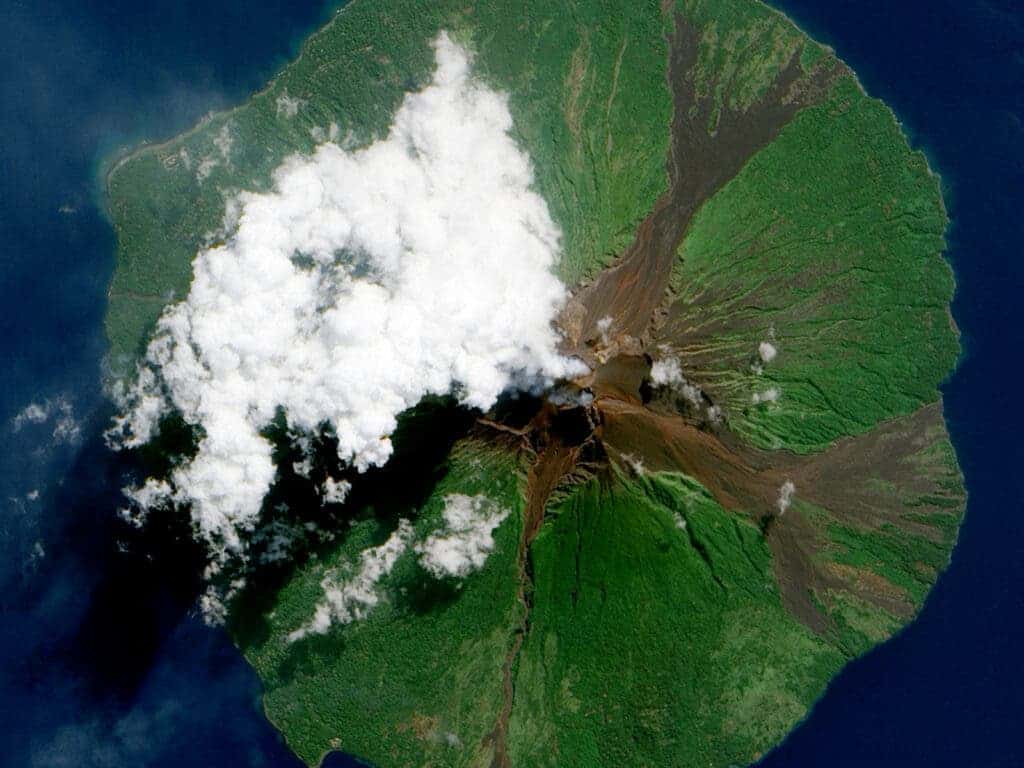There are about 300 active volcanoes on Earth, and anyone of them erupting could cause wide-scale disruptions. That’s why monitoring them is very important. Now, a group of researchers has created specially-adapted drones that can fly into volcanoes and gather data to warn of any upcoming eruption.

There are a few ways to forecast when a volcano is going to blow. Scientists can monitor earthquake activity in the area to detect tremors which almost always precede eruptions. With clear skies, satellites are also used to detect and measure the emissions of gases such as sulfur dioxide.
Drones can also help. Volcanologist Emma Liu from University College London and her team focused on the Manam volcano in Papua New Guinea. It’s one of the most active volcanoes in the country, located on an island that off its northeast coast. Manam erupted in 2014 and forced an evacuation of the entire island to the mainland.
“Manam hasn’t been studied in detail but we could see from satellite data that it was producing strong emissions,” said Liu, who led the research team of earth scientists and aerospace engineers. “We [also] wanted to quantify the carbon emission[s] from this very large carbon dioxide emitter.”
Liu and her team traveled to Manam Island and tested two types of long-range drones equipped with gas sensors, cameras, and other devices. The volcano’s slopes are very treacherous, so the drones allowed the researchers to measure volcanic gas emissions more safely and accurately.
The drones flew to over 2,000 meters (6,561 feet) altitude before dipping into Manam’s volcanic plumes some six kilometers (3.7 miles) away from their launching pad. The drones took images of Manam and its two craters, measured the gas composition right above the plumes, and collected four bags of extra gas for rapid analysis.
The images taken by the drones showed that degassing at Manam’s southern crater intensified between October 2018 and May 2019 (the volcano erupted in June). But volcanic emissions aren’t alone a reliable indicator of whether an eruption is likely. That’s why the researchers also looked at the ratio between different gases in the collected samples. Doing so can help detect the ascent of hot magma to the surface through the expulsion of CO2-rich emissions that reportedly precede big eruptions. However, the findings showed that the mixture of gases emitted from Manam was much the same during both field trips. The Manam ranks among the top 10 strongest degassing volcanoes in the world.
“Our novel approach – that is, long-range and high-altitude [drone] operations enabling in situ measurements – is presently the only feasible means by which we can characterize gas chemistry at steep, hazardous, and highly active volcanoes like Manam,” the research team concluded in their paper.
The researchers believe the drones could help local communities monitor nearby volcanoes and forecast future eruptions. At the same time, their measurements could also tell us more about the most inaccessible, highly active volcanoes on the planet and how volcanism in general contributes to the global carbon cycle.
The study was published in the journal Science Advances.






